May 15, 2019
This year’s Densho Dinner is on November 2, 2019 and we’re encouraging friends and supporters from all over the country to make a trip out of it! With Satsuki Ina as our keynote speaker and an impressive lineup of arts, activism, and history, we promise that the program alone will be worth the trip — but just to sweeten the deal, here’s a whole weekend’s worth of Japanese American and pan-Asian history, culture, and foods you can enjoy while you’re in Seattle.
Friday morning
Get the morning started right with a crunchy cream or azuki donut from Fuji Bakery and an ube latte from Hood Famous Bakeshop, then head to the Wing Luke Museum of the Asian Pacific American Experience to get up to speed on local Asian American and Pacific Islander history and art. From there, you can follow their Japanese American Remembrance Trail map and take in historic Nihonmachi in the heart of today’s Chinatown-International District!
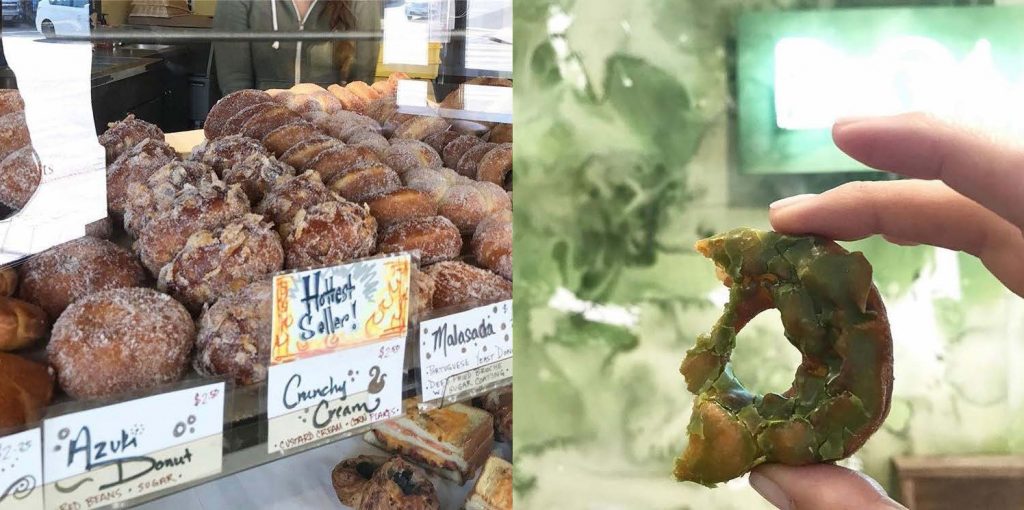
(left) and a mochi matcha donut at Raised Donuts (right).
Be sure to pop into Kobo at Higo (former home of Higo 10 Cent Store) to see their display on the store’s history (check out their beautiful clothing and gifts too!), then take a stroll down Nihonmachi Alley to see public art by Densho 2018 resident artist Erin Shigaki and others. Also check out Momo while you’re in the area — owners Lei Ann Shiramizu and Tom Kleifgen are active in keeping the story of Nihonmachi alive, and their shop features rare treasures from the region and abroad.
Around the corner, you’ll find the Panama Hotel, which was essential to the historic Japanese community, housing local businesses, a bathhouse, restaurants, and many residents and visitors. There you can peer below the glass panel in the floorboards and see untouched belongings left behind by Japanese American families forced to leave after Executive Order 9066. Stop in to learn more about how WWII incarceration impacted the Seattle Japanese American community, listen to some vintage tunes, and grab a cup of tea.
Friday afternoon
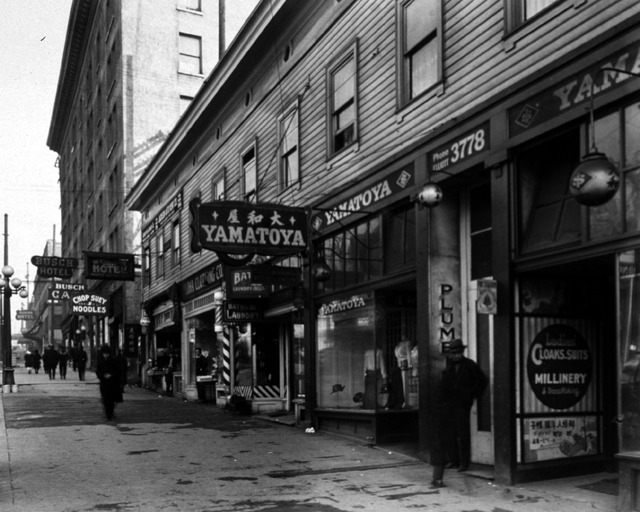
Grab lunch in the International District! Some of our faves are Fuji Sushi, Dough Zone (get there early to avoid the lunch rush and you absolutely must try their pork xiao long bao), or enjoy dim sum at Jade Garden, or kashiwa senbei and build-your-own curry at Fort St. George. Roll yourself over to Young Tea or BlackBall Desserts for some post-lunch boba.
While you’re in the neighborhood, drop by Uwajimaya, the oldest Asian American grocer in the PNW and get some mochi for the road. Catch the light rail and head to Pike Place Market where, prior to WWII, Japanese American farmers occupied nearly 80% of the produce stalls. Above the market’s main entrance is a five-panel mural by Seattle artist Aki Sogabe that honors this history.
Buy yourself some flowers (you deserve it!), check out Osara Commissary’s fun and funky Japanese wares, then satisfy your sweet tooth with some sesame balls from Mee Sum Pastry.
Friday evening
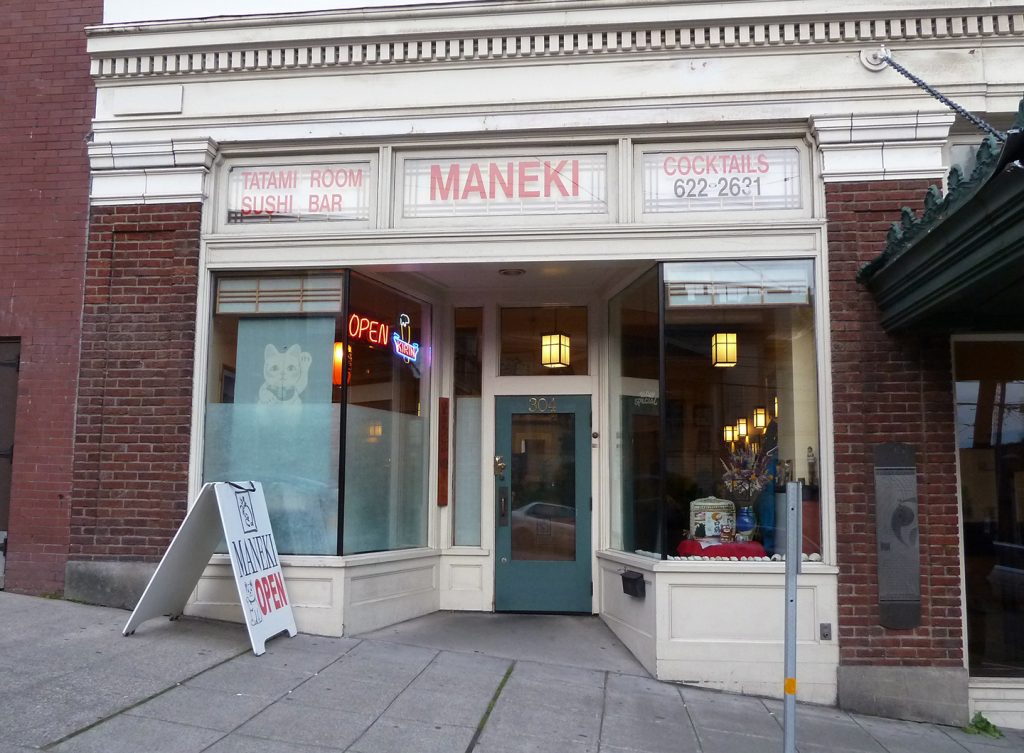
Treat yourself to dinner at Maneki, Seattle’s oldest surviving Japanese restaurant (established in 1904), then sing your heart out at Bush Garden, Seattle’s original karaoke bar. The building housing “the Bush,” as it’s known to locals, was an SRO hotel that housed Issei immigrants back in the day before transforming into a swanky restaurant with tatami rooms and an elaborate Japanese garden in 1957, and has been a haunt for community activists and artists since the 1970s.
Saturday morning
Get your loco moco fix with brunch at Super Six, serving up Asian and Hawaiian takes on American comfort food and PNW staples in a former auto body shop in Columbia City. Then head to Kubota Garden for a stroll through the sprawling gardens founded by Fujitaro Kubota in 1927. Pack an umbrella and savor the curative powers of the Pacific Northwest air, perfect for curing that karaoke hangover.
Pay respects at the Nisei Veterans Memorial Wall, a community monument honoring Japanese American veterans, as well as those incarcerated during WWII. If you make arrangements ahead of time, you can head inside to check out their collection of historic photos and memorabilia. (Contact info@seattlenvc.org or info@nvcfoundation.org to make arrangements.)
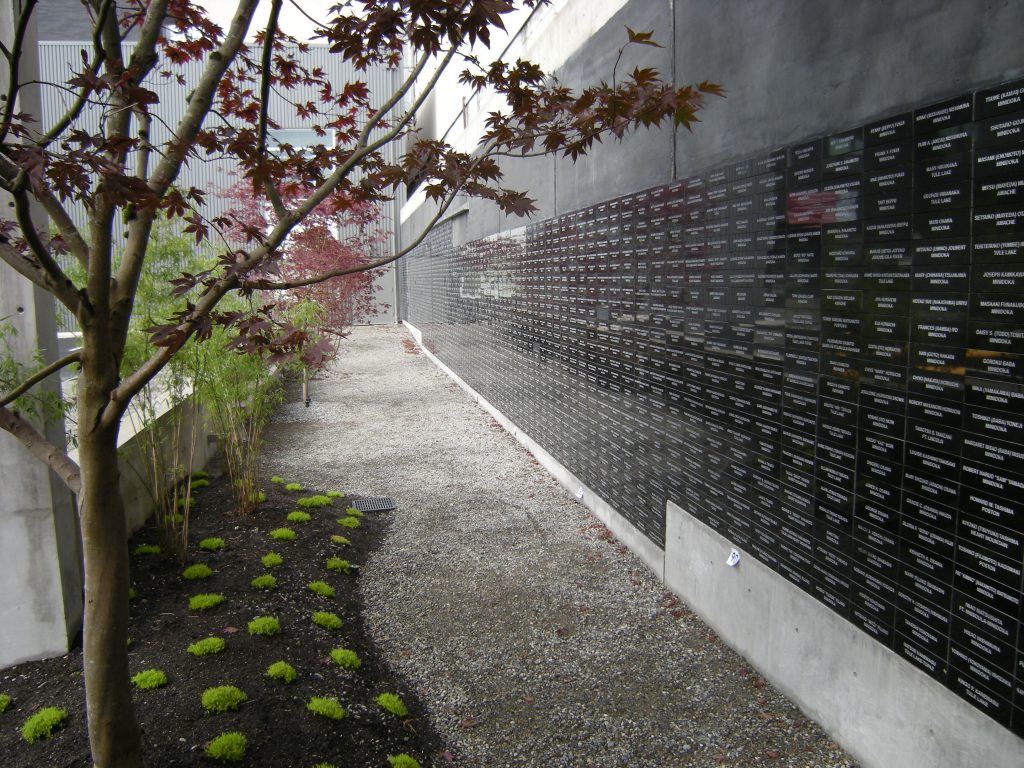
Saturday afternoon
Warm up with bowl of ramen at Danbo or udon at U:Don on Capitol Hill, then check out Elliott Bay Books and their incredible selection of Japanese American history and literature. If events manager and Densho supporter Karen Maeda Allman is around, she can show you all her faves.
Head back to your hotel and get your shine on for the Densho Dinner!
Saturday evening
Sashay your way to the Densho Dinner at Bellevue’s Meydenbauer Center. This year’s theme “Activating Our History” promises a perfect alchemy of history, art, and activism, featuring Satsuki Ina as our keynote speaker and a lineup of guest appearances you don’t want to miss!
5:00-6:30 PM Sushi & Sake Reception and Silent Auction
6:30-9:00 PM Dinner Program
There’s parking on site, but you might consider a ride share if you want to be able to freely imbibe and not worry about getting home safely.
Sunday morning
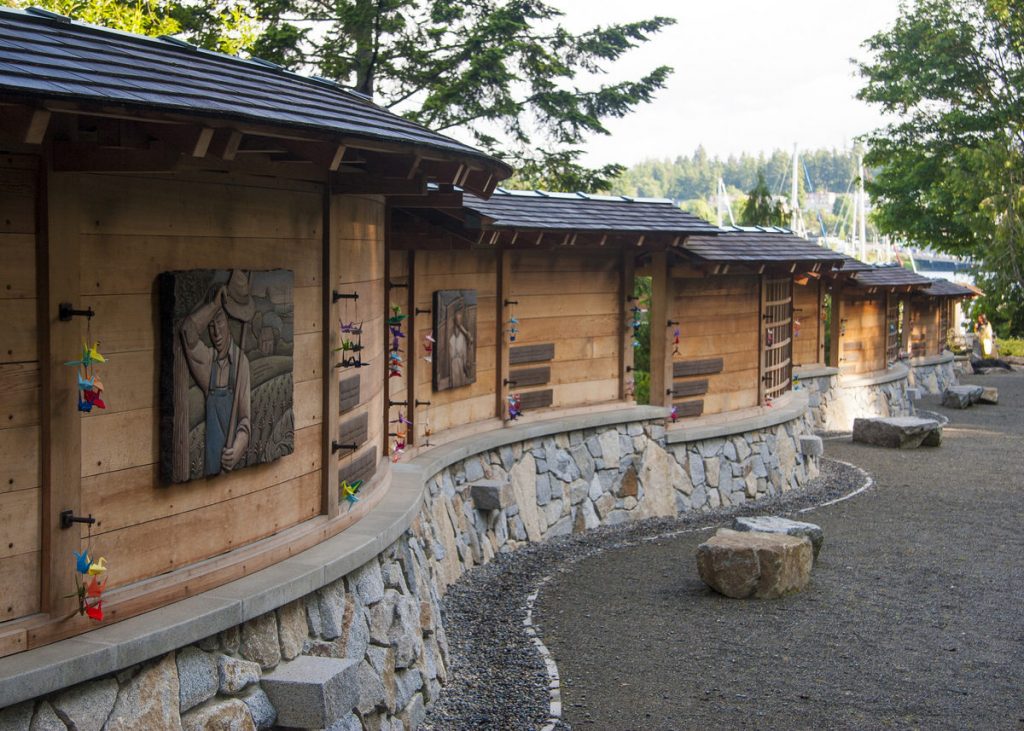
Sleep in, eat mochi donuts at Raised, then catch a ferry out to Bainbridge Island to visit the Japanese American Exclusion Memorial, which honors the names of all 276 Japanese Americans forcibly removed from Bainbridge in 1942. Take a moment to pause here and reflect on all you’ve seen and learned this weekend.
Grab lunch at the New Rose Cafe at Bainbridge Gardens, operated by the Harui family for more than 60 years, before jetting back to the mainland and catching your flight home.
Getting around
Renting a car will help ensure you can see as much of Seattle as possible. If you’re going to Capitol Hill, Pike Place Market, or anywhere else downtown we recommend Lyft, Uber, light rail, or bus so you can avoid the hassle of navigating traffic and parking.
Lodging
We trust you to follow your noses to the best lodging deals but if you want to stay close to the dinner venue and don’t mind being a little outside of Seattle, this Bellevue Marriot is probably your best bet.
—
By Nina Wallace, Danielle Higa, and Natasha Varner
